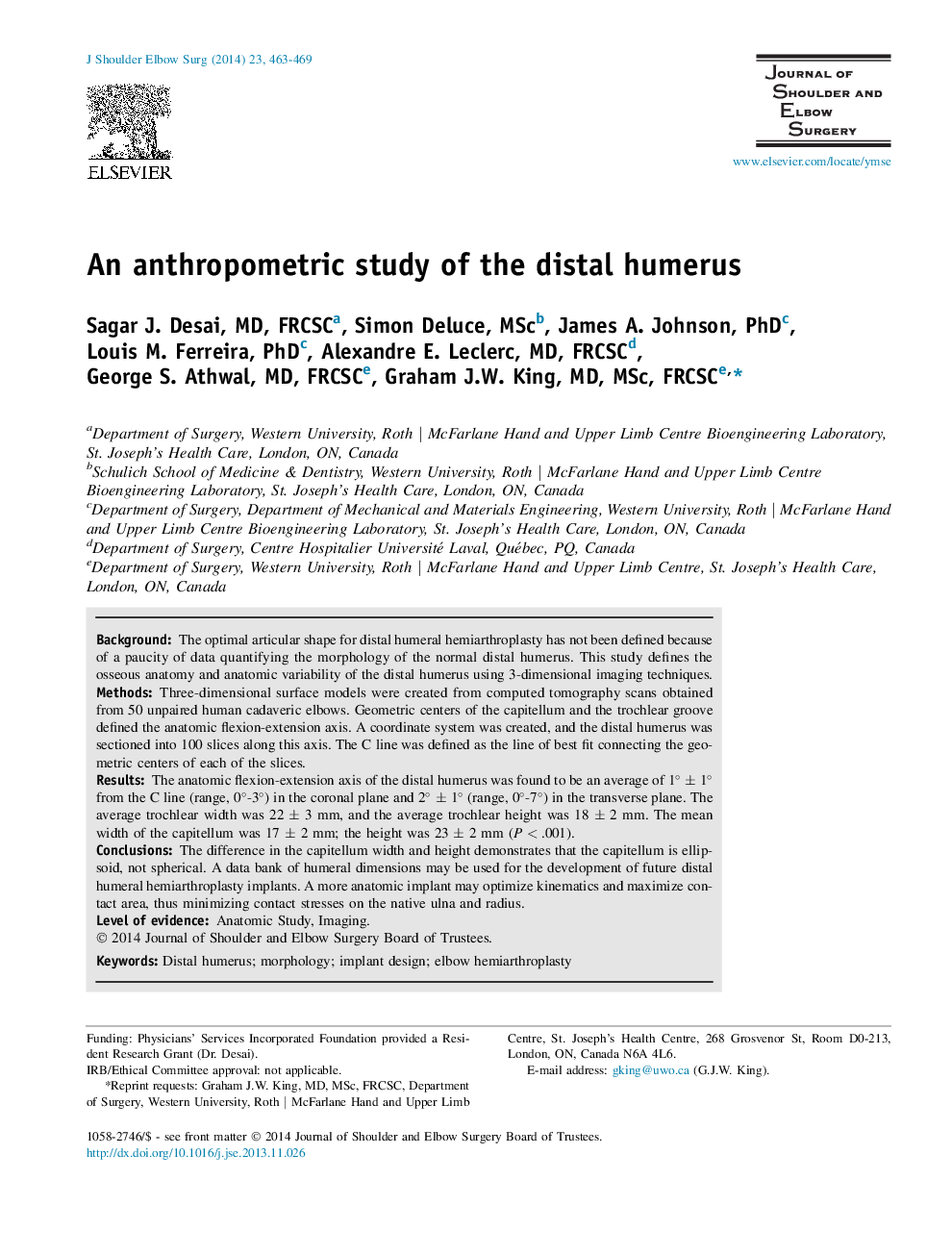| Article ID | Journal | Published Year | Pages | File Type |
|---|---|---|---|---|
| 6211047 | Journal of Shoulder and Elbow Surgery | 2014 | 7 Pages |
BackgroundThe optimal articular shape for distal humeral hemiarthroplasty has not been defined because of a paucity of data quantifying the morphology of the normal distal humerus. This study defines the osseous anatomy and anatomic variability of the distal humerus using 3-dimensional imaging techniques.MethodsThree-dimensional surface models were created from computed tomography scans obtained from 50 unpaired human cadaveric elbows. Geometric centers of the capitellum and the trochlear groove defined the anatomic flexion-extension axis. A coordinate system was created, and the distal humerus was sectioned into 100 slices along this axis. The C line was defined as the line of best fit connecting the geometric centers of each of the slices.ResultsThe anatomic flexion-extension axis of the distal humerus was found to be an average of 1° ± 1° from the C line (range, 0°-3°) in the coronal plane and 2° ± 1° (range, 0°-7°) in the transverse plane. The average trochlear width was 22 ± 3 mm, and the average trochlear height was 18 ± 2 mm. The mean width of the capitellum was 17 ± 2 mm; the height was 23 ± 2 mm (P < .001).ConclusionsThe difference in the capitellum width and height demonstrates that the capitellum is ellipsoid, not spherical. A data bank of humeral dimensions may be used for the development of future distal humeral hemiarthroplasty implants. A more anatomic implant may optimize kinematics and maximize contact area, thus minimizing contact stresses on the native ulna and radius.
